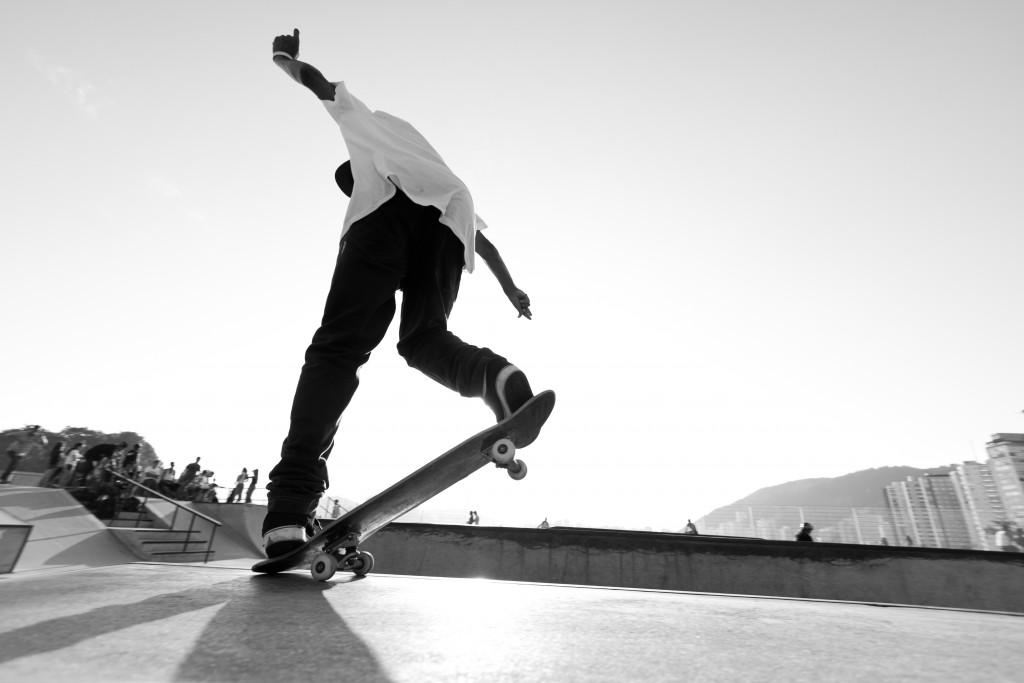Skateboarding is a sport that many people enjoy. It can be a fun way to get some exercise, and it can also be a competitive activity. Skateboarders have their own culture, and many tricks can be performed on a skateboard. If you’re interested in learning more or you want to start skating yourself, here are a few tips to help you get started:
Skating Gear and Safety
The first thing you’ll need is a skateboard. It will also be essential for you to learn to maintain it, as this will help you keep it in good condition for longer. When first learning to skateboard, it’s important to wear the proper safety gear. And if you’re practicing a new trick, wear even more safety gear than usual. This will help protect you from worse injuries if you happen to fall. Some basic safety gear includes wearing a helmet, wrist guards, elbow pads, and knee pads. These protect the most common areas where people get injured while skateboarding.
Aside from gear, you should also be wearing proper shoes when skateboarding. Many people wear sneakers, but specific skate shoes can help you with grip and board control. You should avoid wearing flip-flops or sandals while skating, as these can increase your risk of injury even if you’re already getting the hang of skateboarding.
Skateboarding for Beginners
For those looking to get into skateboarding, you can learn by watching online tutorials, attending a skateboarding class, or practicing with friends. Whichever method you choose, make sure you take your time and don’t try to do too much too soon. Here are some basic skateboarding tips to help you get started:
Stance
When skateboarding, you want to be as stable as possible, so it’s important to find the right stance. You can try stances such as the basic stance for beginners, the staggered stance for more stability, and the duck stance for better control.
Pushing off
When you push off a skateboard, you want to use your whole body to generate power. This means using your arms, shoulders, and core to push your board forward. You should also keep your back straight and your head up as you go.
Turning
Once you have gotten the hang of basic skateboarding, you can start to work on turns. You would have to use your arms and shoulders to steer the skateboard and lean in the direction you want. Once you’re used to this, you can start learning kick turns.
Stopping
You need to learn how to stop by doing a tail scrape when starting out. To do this, put some weight on your foot on the skateboard’s tail which will lift the front side up until the skateboard’s tail scrapes the ground. You can also learn to brake using your foot if you’re going a casual speed on even ground. This involves dragging your shoe on the ground to slow down until you reach a stop.

Common Injuries
Skateboarding can be a fun and exhilarating experience, but it can also be dangerous if you’re not careful. Skateboarders often practice and try tricks that can result in injuries from falls and collisions. Some common injuries include:
Dental Injuries
Skateboarders can get dental issues if they fall and hit their teeth on the ground or on their skateboard. Some common dental injuries include chipped teeth, dental fractures, or tooth displacement. Depending on the damage, these can be very painful. This is why you should deal with it immediately by going to a reputable dentist and having them assess the damage. They will help you find the proper dental procedure and restore your smile.
Cuts and Bruises
Skateboarders can get cuts and bruises from falling off their skateboards and colliding with various objects. Minor cuts and bruises usually heal on their own, but more severe ones may need medical attention. Suppose you have a severe cut or bruise. In that case, it’s important to see a doctor immediately, so they can treat your injuries and help you recover.
Sprains and Strains
Skateboarding can result in different sprains and strains. An ankle sprain is one of the most common, which can occur when you fall off your skateboard or land awkwardly after a jump. Ankle sprains are caused by tears in the ligaments that support your ankle and can be painful. A doctor can properly diagnose the injury and provide the necessary treatment to get you back on your feet (or board) as soon as possible.
If you’re looking to get into skateboarding, it’s important to know that it takes patience and a lot of practice. You can’t expect to be a pro overnight, so taking your time and learning the ropes is important. With the right attitude, you’ll be skating like a pro in no time.




